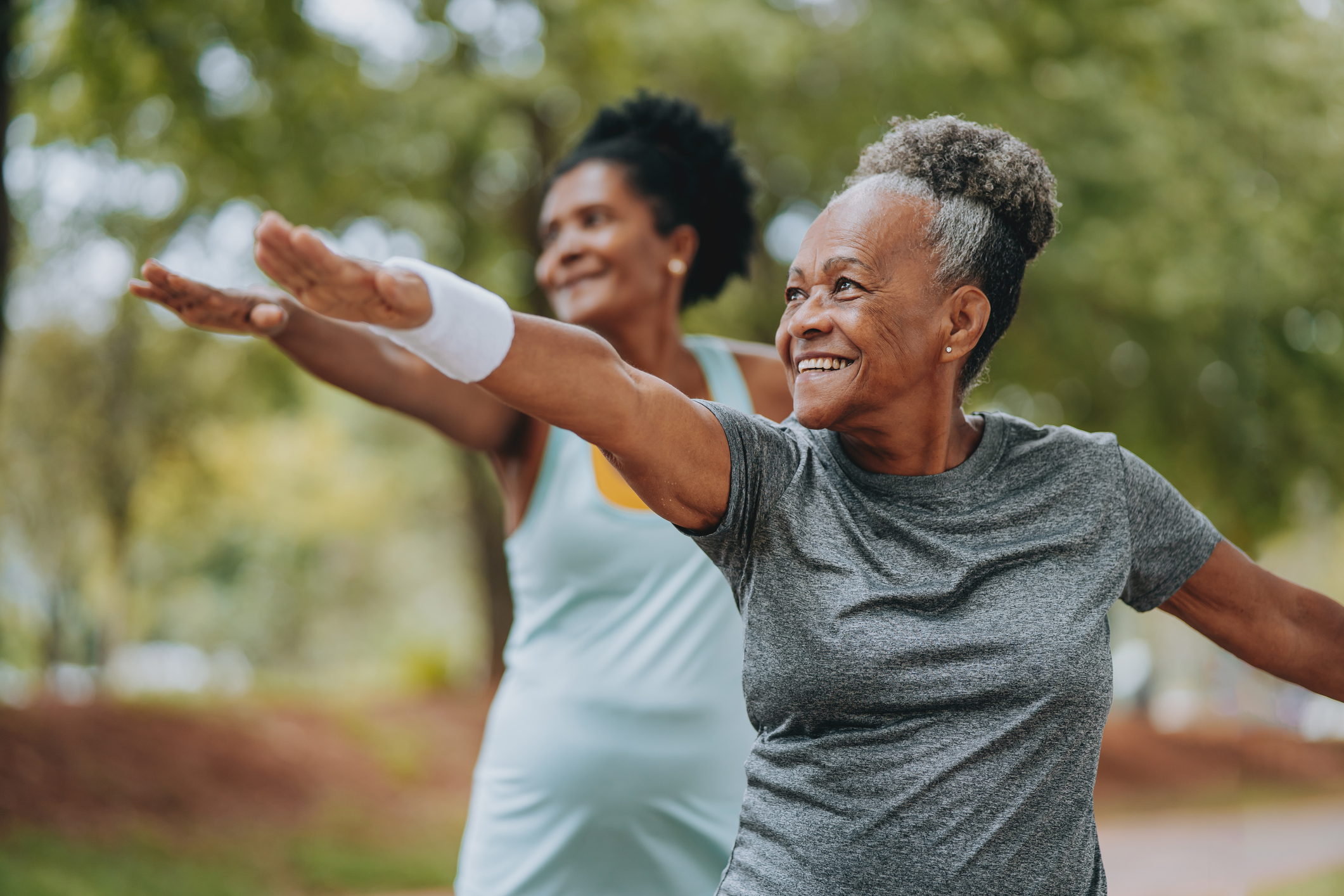Alzheimer’s disease and related dementias are debilitating conditions leading to impaired cognitive processes and worsening physical functioning. They place significant burden on caregivers and health care systems. Roughly 15 million cases of cognitive impairment and Alzheimer’s disease in the U.S. are projected by 2060. While there are no medical treatments to delay Alzheimer’s disease progression, physical activity is one behavior that we can change that may help to delay or prevent cognitive decline. In fact, it is estimated that 1 in 5 Alzheimer’s disease cases in the U.S. are attributed to inadequate physical activity.
The Physical Activity Guidelines for Americans recommends that adults obtain 150 minutes or more of moderate- to vigorous-intensity physical activity. However, there are some promising findings for the protective health benefits of light-intensity physical activities such as yoga and housework. Thus, all movement throughout the day may be needed for good brain and body health. Advances in accelerometers and wearable devices have allowed for 24-hour continuous monitoring protocols to be implemented in large-scale studies, such as the nationally representative National Health and Nutrition Examination Survey (NHANES). From 2011 to 2014, NHANES implemented wrist-worn accelerometer devices into their health assessment of the American population. The device data are presented in Monitor-Independent Movement Summary units (MIMS-units). This is a measure of total continuous movement, with larger MIMS-units indicating higher amounts of movement performed throughout a 24-hour period.
Our study, published in Medicine & Science in Sports & Exercise®, examined the cross-sectional association of movement performed throughout a 24-hour period and cognitive function and subjective cognitive complaints. We used 2011-14 NHANES device-measured activity and cognitive tests and self-reported cognitive problems. We examined this in 2,708 adults over the age of 60 years.
We used the age- and sex-standardized MIMS-units percentiles previously developed to provide relative information about how a person’s movement behaviors across the day are associated with cognitive health compared to others of the same sex and age. Higher movement throughout the day was associated with higher scores in memory, language and verbal fluency, as well as executive function and processing speed tasks. The most important message is that cognitive functioning benefits appears to be among participants achieving at or above the 50th movement (MIMS-units) percentile for their age and sex. Similarly, those in the upper half of movement percentiles were half as likely to self-report difficulties in thinking or remembering, or experiencing any confusion or memory loss, compared to people in the lowest 25th percentile of movement.
This study further highlights the need to support total daily movement across the 24-hour period for healthy aging, as recently recommended in Canadian guidelines. Ultimately, using the standardized MIMS percentile can provide a reference for clinicians and researchers using wearable data to help patients achieve overall daily movement goals that are needed for brain and body health benefits.

Erin Dooley, PhD, is a postdoctoral researcher in the Department of Epidemiology at the University of Alabama at Birmingham. With a background in exercise and behavioral sciences, Dr. Dooley’s research uses wearable devices to measure sleep-wake time-use data with the aim to understand the interaction of physical activity and sleep cycles with health to inform sustainable public health recommendations and support healthy aging across the lifespan. She has been an ACSM member since 2016.




